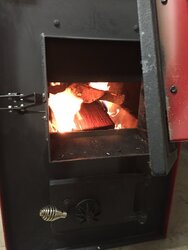jb6l6gc
Minister of Fire
yes that looks like an identical unit to my hotblast 1400 which has a johnson energy systems tag on it too. On a sidenote it may not necessarilly be Co it could be those two chinese junk fans you have on the back are not pushing enough air and overheating your ducts and such. That was the exact problem I had. Fans werent pushing enough air overheating ducts and almost melted an abs pipe that was near one of the ducts. Nasty fumes, headaches etc. Trust me you will be much happier to replace those junk, noisy, expensive chinese fans with a real furnace fan, the difference is llike night and day. You can get a furnace fan from one of your local hvac guys or craigslist for cheaper than one replacment just make sure its 110v and it wires in the same.


